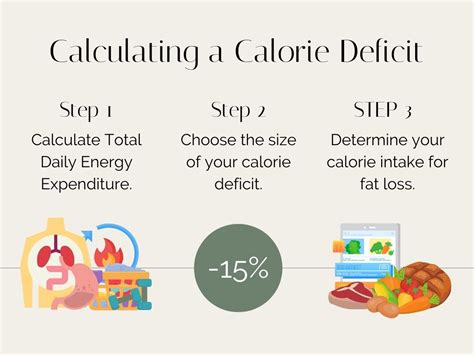How to Be in a Calorie Deficit: A Guide to Safe and Effective Weight Loss
Want to lose weight? Understanding and achieving a calorie deficit is key. This isn't about starvation diets; it's about making sustainable changes to your eating and activity habits. This guide will walk you through how to safely and effectively create a calorie deficit for healthy weight loss.
Understanding Calorie Deficit
A calorie deficit occurs when you burn more calories than you consume. Your body then taps into its stored energy (fat) to make up the difference, resulting in weight loss. It's crucial to remember that a healthy and sustainable calorie deficit is key, not a drastic one. Crash dieting can be harmful to your health.
How Many Calories Should I Consume?
There's no one-size-fits-all answer. Your ideal calorie intake depends on several factors:
- Age: Metabolism slows with age.
- Sex: Men generally have higher metabolisms than women.
- Activity level: Highly active individuals need more calories than sedentary individuals.
- Weight goals: A larger deficit leads to faster weight loss, but it's not always healthier.
Instead of guessing, consider using online calorie calculators. Many free tools are available that estimate your Basal Metabolic Rate (BMR) and Total Daily Energy Expenditure (TDEE) based on your individual characteristics. These calculators provide a starting point; adjust your intake based on your progress.
Creating a Healthy Calorie Deficit
Avoid drastic cuts. Aim for a moderate deficit of 250-500 calories per day. A larger deficit can lead to muscle loss, nutrient deficiencies, and a slower metabolism.
Strategies for Creating a Calorie Deficit:
1. Track Your Calories: Use a food diary, app (MyFitnessPal, Lose It!), or even a notebook to monitor your daily intake. This helps you stay accountable and identify areas for improvement.
2. Prioritize Whole Foods: Focus on nutrient-dense foods like fruits, vegetables, lean proteins, and whole grains. These foods are filling and provide essential nutrients without excessive calories.
3. Control Portion Sizes: Be mindful of how much you're eating. Use smaller plates and bowls, and pay attention to your body's hunger and fullness cues.
4. Reduce Unhealthy Fats and Sugars: These are often "empty calories" — high in calories but low in nutritional value. Limit processed foods, sugary drinks, and unhealthy fats.
5. Increase Physical Activity: Exercise burns calories and improves overall health. Find activities you enjoy, whether it's running, swimming, cycling, or even brisk walking. Aim for at least 150 minutes of moderate-intensity aerobic activity per week.
6. Stay Hydrated: Drinking plenty of water can help you feel full, reducing your calorie intake.
7. Get Enough Sleep: Lack of sleep can disrupt hormones that regulate appetite, making it harder to manage your calorie intake.
Monitoring Your Progress and Making Adjustments
Regularly weigh yourself (once a week is sufficient) and track your measurements. If you're not seeing progress, you may need to adjust your calorie intake or increase your physical activity. Listen to your body. If you feel constantly hungry or fatigued, you may be in too large of a deficit.
Important Considerations
- Consult a Professional: Before making significant dietary changes, consult a doctor or registered dietitian, especially if you have any underlying health conditions.
- Sustainable Habits: Focus on building sustainable lifestyle changes rather than quick fixes. This ensures long-term weight management and overall well-being.
- Mental Well-being: Weight loss is a journey, not a race. Be patient with yourself and celebrate your progress along the way.
By following these strategies and prioritizing a healthy and sustainable approach, you can effectively create a calorie deficit and achieve your weight loss goals. Remember, consistency and patience are key!
